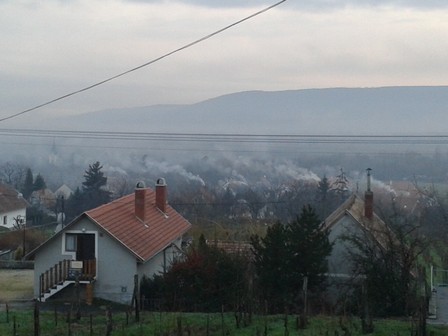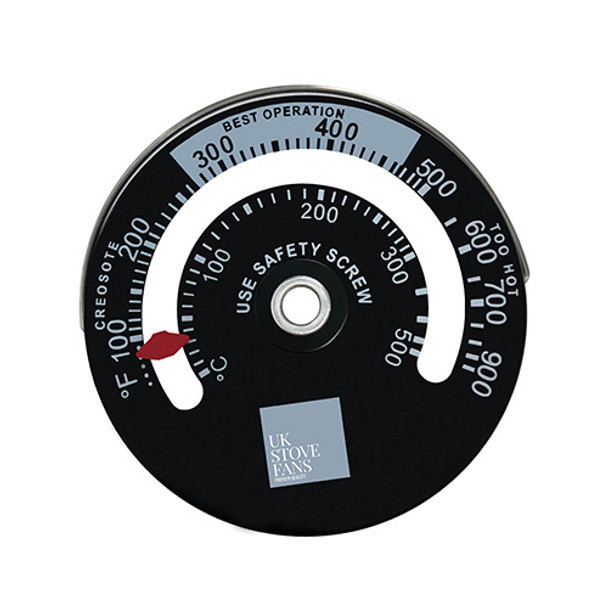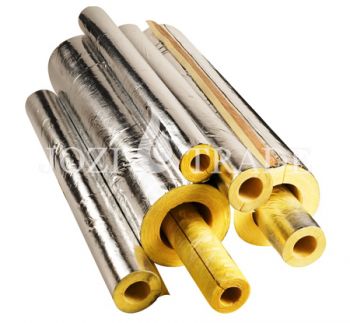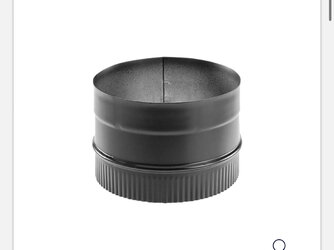Hello fellow stovers!
Having a stove for the first time and I cannot cope with creosote smell for over an year.
Stove: Dovre TAI55WD (bought second hand)
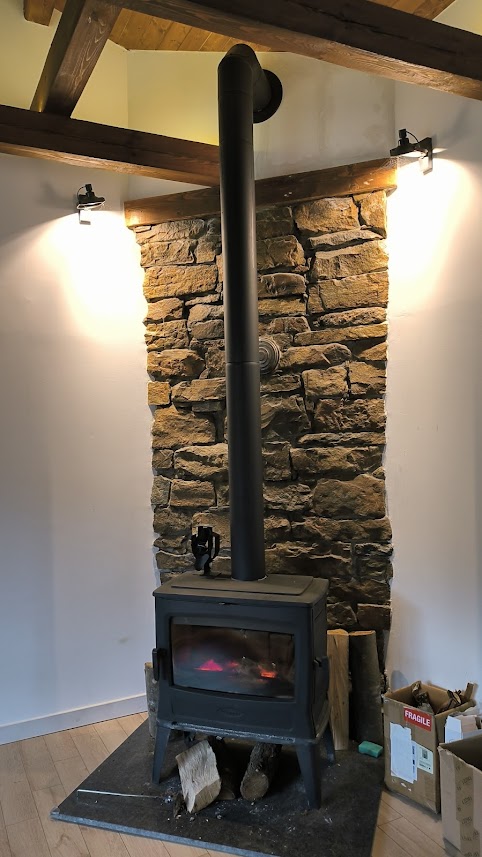
Short story:
Whenever the stove heats up above 200-220C (390F) it starts giving off a cantran heavy smell(I guess it's creosote), right where
the chimney piping connects to the stove. And creasote leaks from metal chimney piping.
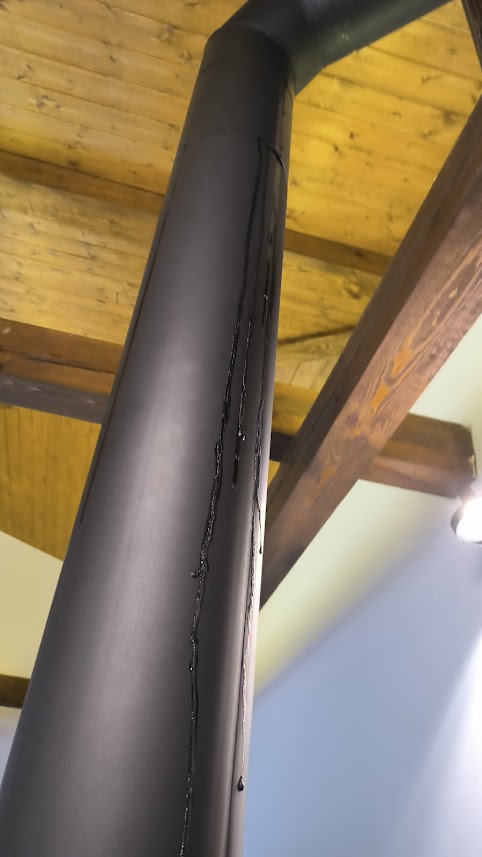
Long Story:
When I first started the stove when heated above 200C it gave the bad smell on the left side where it connects to the top.
It's cast iron parts so I disassembled it whole, cleanined it, degreased, and assembled. Things improved but it was still giving
from the stove exhaust where it connects to the chimney piping. There was a connection flange with cloth/asbestos sealant, which I removed
and put high heat 1500 Celsius (2732 F) resistant silicone sealant. Still continued. Might be from the flange to pipe connection.
At first I had 13cm (5.1 inches) chimney sheet metal pipe with lots of twists and corners. Manual said it needed 15cm (5.9 inches).
I thought that the smaller diameter and lots of turns chocked the woodstove. So I changed the piping with heavy duty, thick metal
pipe 0.08 inches with much less corners. Also I used a stove sealant for 1500C to try to seal up the pipe/stove flange connection. I guess
I did not get a good job degreasing and sealant chipped off after a while.
A new additional problem appeared - black liquid started oozing from the metal chimney piping (second pic above). I read here on the forum that it could be water entering from the top but I guess it's not possible because there are two 90 degree turns until it exits. Metal piping makes a turn before it reaches the chimney body made of chimney circle bricks with diameter 25cm (9.8 inches). Or because it could just melt because of the high temp (might be this).I saw offers of pipe male sides pointing down but I won't be able to do it at the very bottom with the stove top flange. I have the option to move the flange (exhaust) at the back of the stove. and put a 90 degree knee with a service opening. This way I might be able to do all males pointing down.
I followed the rules of the outside chimney in the stove's manual. It's not above the ridge because it's more than 3 meters (10 feet) away from it. Outside chimney has insulation. I'm afraid even now it's too tall without having reinforcement. It might fall. It's exactly 4 meters (13 feet) high from the stove top.

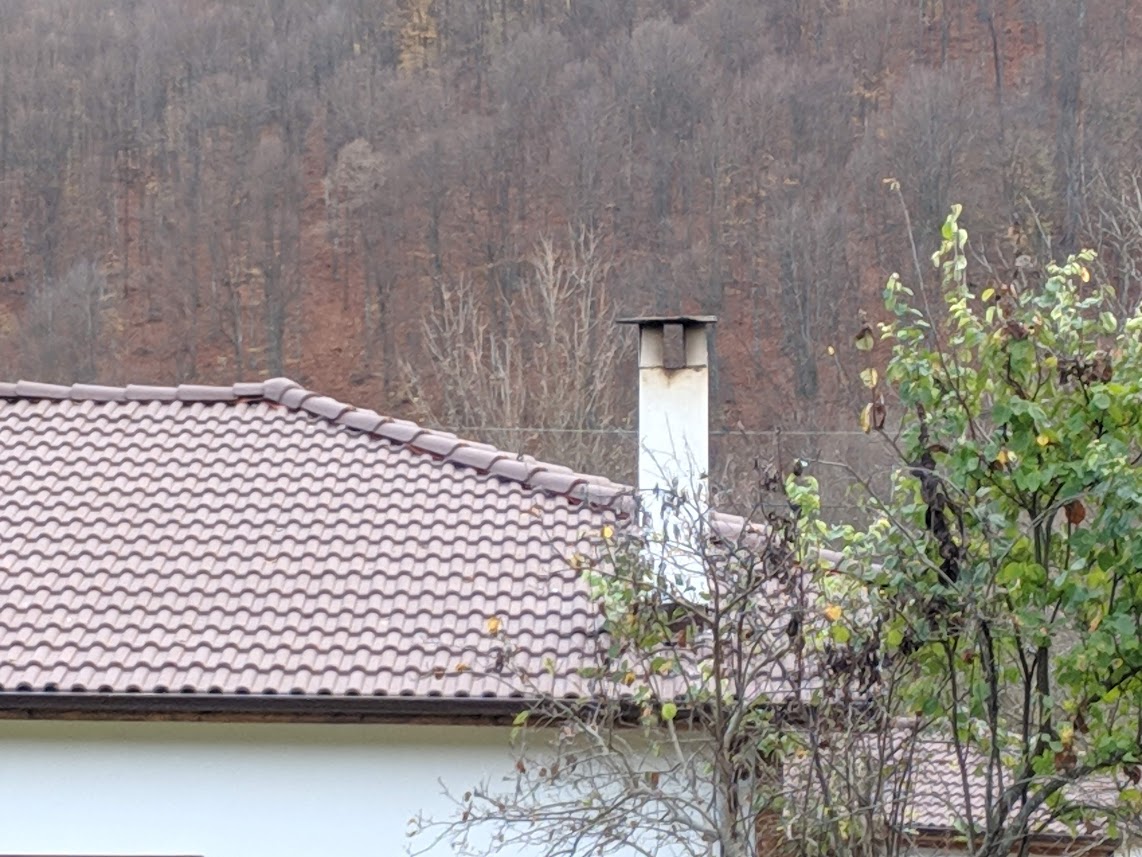
I don't have a ventilation louver where to suck air from. I guess I have enough holes in the house. Could be wrong.
As if some preassure builds in the stove and pushes it out wherever it can and the chimney cannot suck it up.
There is enough temperature differance when I test the stove. Like 5-10C (40-50F) outside. I've tested on windy and non-windy days.
I'm quite desperate at this moment after so much testing and work. It's time consuming to keep the stove under 200C. Even bought a laser thermometer to keep it under. Also a CO meter. Normal working temp by the manual says about 350C (662F). I have to vent the whole house when it reaches higher temps than 200C.
Really hope you could point me in a direction.
Cheers!
p.s. - shall I try higher metal outside chimney with double wall insulated. It could help me remove the two 90 degrees by going just straight up.
Having a stove for the first time and I cannot cope with creosote smell for over an year.
Stove: Dovre TAI55WD (bought second hand)
Short story:
Whenever the stove heats up above 200-220C (390F) it starts giving off a cantran heavy smell(I guess it's creosote), right where
the chimney piping connects to the stove. And creasote leaks from metal chimney piping.
Long Story:
When I first started the stove when heated above 200C it gave the bad smell on the left side where it connects to the top.
It's cast iron parts so I disassembled it whole, cleanined it, degreased, and assembled. Things improved but it was still giving
from the stove exhaust where it connects to the chimney piping. There was a connection flange with cloth/asbestos sealant, which I removed
and put high heat 1500 Celsius (2732 F) resistant silicone sealant. Still continued. Might be from the flange to pipe connection.
At first I had 13cm (5.1 inches) chimney sheet metal pipe with lots of twists and corners. Manual said it needed 15cm (5.9 inches).
I thought that the smaller diameter and lots of turns chocked the woodstove. So I changed the piping with heavy duty, thick metal
pipe 0.08 inches with much less corners. Also I used a stove sealant for 1500C to try to seal up the pipe/stove flange connection. I guess
I did not get a good job degreasing and sealant chipped off after a while.
A new additional problem appeared - black liquid started oozing from the metal chimney piping (second pic above). I read here on the forum that it could be water entering from the top but I guess it's not possible because there are two 90 degree turns until it exits. Metal piping makes a turn before it reaches the chimney body made of chimney circle bricks with diameter 25cm (9.8 inches). Or because it could just melt because of the high temp (might be this).I saw offers of pipe male sides pointing down but I won't be able to do it at the very bottom with the stove top flange. I have the option to move the flange (exhaust) at the back of the stove. and put a 90 degree knee with a service opening. This way I might be able to do all males pointing down.
I followed the rules of the outside chimney in the stove's manual. It's not above the ridge because it's more than 3 meters (10 feet) away from it. Outside chimney has insulation. I'm afraid even now it's too tall without having reinforcement. It might fall. It's exactly 4 meters (13 feet) high from the stove top.
I don't have a ventilation louver where to suck air from. I guess I have enough holes in the house. Could be wrong.
As if some preassure builds in the stove and pushes it out wherever it can and the chimney cannot suck it up.
There is enough temperature differance when I test the stove. Like 5-10C (40-50F) outside. I've tested on windy and non-windy days.
I'm quite desperate at this moment after so much testing and work. It's time consuming to keep the stove under 200C. Even bought a laser thermometer to keep it under. Also a CO meter. Normal working temp by the manual says about 350C (662F). I have to vent the whole house when it reaches higher temps than 200C.
Really hope you could point me in a direction.
Cheers!
p.s. - shall I try higher metal outside chimney with double wall insulated. It could help me remove the two 90 degrees by going just straight up.
Last edited:





